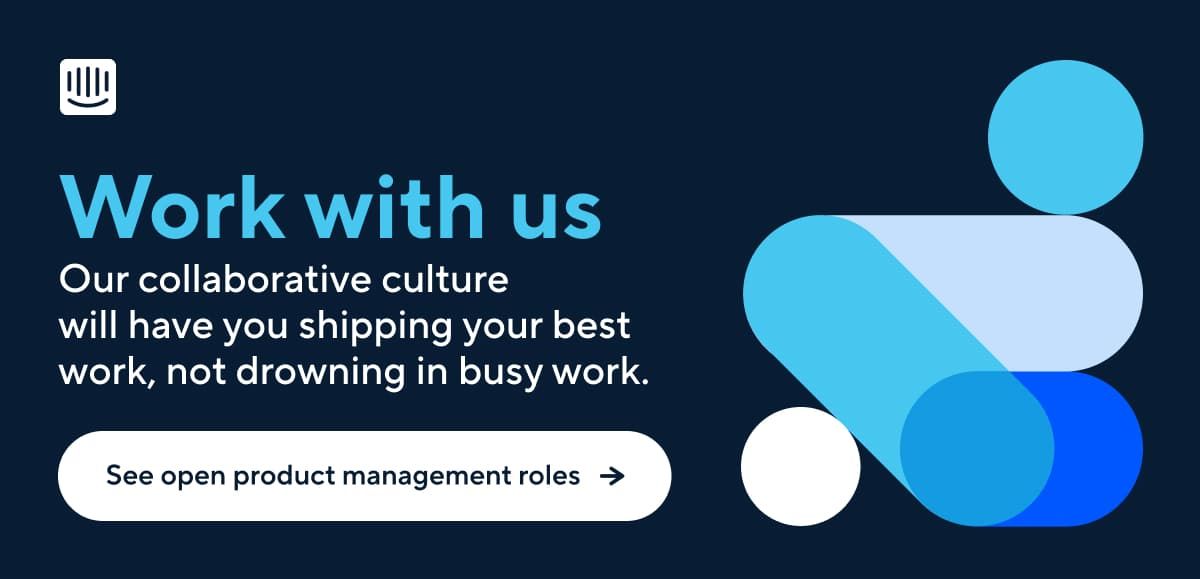
Moving fast and building smart: The value of quick customer feedback
Main illustration: Amy Lauren
At Intercom we obsess about our customers’ success. We also prioritize moving fast, making quick, effective decisions, and maintaining momentum.
Collecting customer feedback is crucial to making smart product decisions, but it can be time-consuming for both our team and our customers. This might mean compromising on production speed, or on customer satisfaction if our users feel they’re being contacted too frequently.
“Speeding up customer feedback loops allows you to learn and iterate fast enough to stay ahead of the market while making your customers feel included in the process”
As we evolve to serve the needs of upmarket companies, it’s important we focus on the voice of our target segment. Speeding up customer feedback loops allows you to learn and iterate fast enough to stay ahead of the market while making your customers feel included in the process. However, getting access to these customers can be challenging – the pool of respondents is smaller, making it easier for feedback requests to qualify as “spam” if you reach out too often.
Move away from traditional methods
There are lots of well-known, proven methods of collecting feedback, like interviews or forms. Although they’re often effective, they can feel like a big time commitment to a customer and impact their willingness to participate. As a result, feedback loops can slow down, sacrificing important inputs to product decisions. Here are three tips for collecting customer feedback quickly and efficiently.
1. Choose a feedback channel that’s convenient for respondents
As a product manager working on our Inbox, I have both internal (our Customer Support team) and external customers.
Our support reps spend their entire day having conversations within our product, so they’re an invaluable source of feedback around our product. When they’re not “inboxing” you can usually find them on Slack, helping each other out and collaborating with other teams.
“Due to the Support team’s time constraints, securing time with reps was almost impossible”
However, support reps often have strict SLAs to adhere to and ambitious personal KPIs to hit – sharing product feedback with me isn’t exactly their top priority. I recently wanted to beta test a new Inbox feature but due to the Support team’s time constraints, securing time with reps was almost impossible.
That was when I decided to leverage the wonders of Slack! I tried this first with our own Customer Support team, creating an internal Slack channel with a handful of support reps and encouraging them to share any feedback and questions that arose from the beta test directly with myself and the team. Not only did a flood of feedback rapidly pour into the channel, but the entire product team was able to follow along and immediately act on it.
Within minutes, there was an engineer fixing bugs and a designer brainstorming on iterative solutions. My teammates loved the method – it allowed us to react to the updates quickly in a more lightweight way, and it didn’t require a call or a form to fill out.
Meeting customers where they are, in real time, is simply invaluable
Many Intercom customers also use Slack, and our internal trial was so successful that I extended this method to them via Slack Connect, a Slack tool that facilitates cross-organization communication. It worked like a charm, and created a win-win situation whereby the product team was able to iterate at speed and customers saw an immediate return on their time investment. I would encourage any product manager to try out this lightweight and highly efficient way of soliciting customer feedback. Meeting customers where they are, in real time, is simply invaluable.
Speeding up your feedback loops means sending your customers the right message, at the right time, in the right place. Intercom is built around starting conversations – instead of sending an out-of-context email, why not ask your customers’ thoughts on your app while they’re already using it?
2. Choose the right moment to ask for feedback
Once you gain access to a set of customers, it’s worth leveraging that momentum to strategically solicit more product feedback. One way to do this is by following up with them each time your team ships a product update.
“It allowed us to learn about our customer’s deepest problems in an efficient and connected way”
In the earlier example of the Inbox beta feature, I would keep support reps informed whenever we made changes. As well as prompting feedback on the specific change, this often inspired commentary on peripheral Inbox features and gave way to broader discussions on product improvements. It allowed us to learn about our customer’s deepest problems in an efficient and connected way.
3. Form a personal customer feedback group
Once you’ve managed to foster a relationship with your customers through continuous feedback loops, it’s time to take that relationship to the next level. Engaged customers are often happy to continue the conversation and stay involved – bringing them together to form a customer feedback group is a great way to do this.
“Customer feedback groups are especially helpful when you’re constrained by the size of the pool of customers at your disposal”
These groups are especially helpful when you’re constrained by the size of the pool of customers at your disposal. After working with various support reps – both within Intercom and further afield – on the Inbox beta feature, I reached out to some of them again to see if they would like to continue sharing their experience with me on future betas. Many of them were keen to keep going, allowing our product team to continue growing our product at speed, and giving our customers more influence and engagement in the process.
Interested in learning more about how Intercom’s product team works? Read more about our principles, culture, and open roles here.







